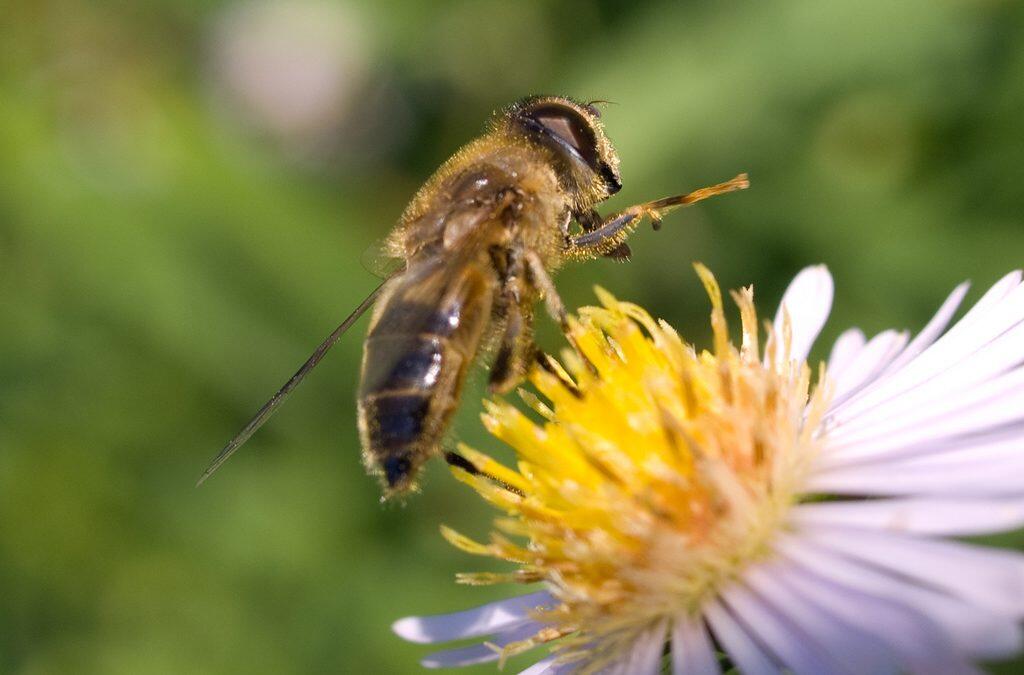Urban rooftops are buzzing across France, but the fad for beekeeping from Montpellier to Lille to Paris — including atop AFP’s headquarters — will do little do reverse declining bee populations, experts say.
The northern city of Lille was a pioneer in efforts to defend the bee by providing pesticide-free environments, and it was among the first to sign on to a national public awareness campaign, “Bees, Sentinels of the Environment”, back in 2007.
Since then, 80 species of wild bees that had disappeared from the Lille area have returned.
“In terms of diversity, 2015 was a good year,” says Lise Daleux, the city’s top environmental official, noting that three rare wild bee species were spotted.
Lille’s free course on bees at the city’s rail station, with its 10 hives, has a two-year waiting list, and in 2008 it became the first French city to appoint a municipal apiculture pointman.
The southern city of Montpellier also caught the buzz early, installing beehives on the roofs of many high schools.
Honeycombs deserted
But urban beekeeping has its limits.
Lille provides “a nice showcase to raise awareness among the general public, but it’s something of a fad that won’t solve the problem,” says Jean-Marc Bonmatin, an expert on neurotoxins.
Around 40 percent of pollinators, including the bee, are threatened with extinction.
Beehives in the countryside are showing a distressing rate of “dead-outs” — deserted honeycombs pointing to dwindling bee populations.
“In the 1990s losses were around five percent, but this number has gone up to as high as 35 percent today,” says Dominique Cena, a spokesman of the National Union of French Apiculture (UNAF).
France is one of Europe’s leading users of pesticides.
The more pesticides are used, the more pests develop resistance to them, which leads to even more intensive use of pesticides.
Pressure from multinationals
“I am not against the use of pesticides, it’s just that they should be used sparingly,” Bonmatin says. “But the interests of the multinationals have the upper hand these days.”
Since French agriculture introduced neonicotinoids — pesticides resembling nicotine that act on the bees’ central nervous system — in 1994, more than 300,000 bee colonies have died off, UNAF says.
“Bees have been decimated with the massive and systematic use of pesticides, used even before a plant grows,” says Bonmatin. “It’s a catastrophe.”
Over the protests of farmers — and especially agribusiness — arguing that there are no viable alternative to neonicotinoids, a bill to ban them that was introduced in 2014 has just become law.
But the ban will not take effect until September 2018, and exemptions will be allowed until July 2020.
“The insects, the basis of all life, are the guarantors of environmental diversity through their role as pollinators on which agricultural production depends, as well as the livestock that are fed by it and will be affected in a chain reaction,” Bonmatin said.
Crops that are totally dependent on cross-pollination by bees include kiwis, melons, squash, Brazil nuts and macadamia nuts.
The extinction of bees would have a serious impact on avocados, almonds and a cornucopia of fruits — apples, apricots, cherries, plums, peaches, pears and most types of berries.
Cities, even with their pollution, can be a refuge for bees, which also learn to adapt to urban noise.
“Their mortality is minimal and their productivity is better by one-third,” Cena says.
Urban beehives can be found across France.
The Paris Opera has long had beehives on its roof, and the Luxembourg Gardens has produced honey from its own bees since 1872.
The French capital today boasts hundreds of beehives, most located on rooftops such as those of the haute cuisine Tour d’Argent restaurant, the Grand Palais and the Musee d’Orsay.
But the surge in urban beekeeping will do little to counter the collapse of the ecosystem due to the use of pesticides, Bonmatin says.
Honey production also suffers in a country that consumes about 40,000 tonnes a year.
Since the 1990s, when France was practically autonomous in its honey needs, today it is a net importer.
Production reached an all-time low in 2014 when just 10,000 tonnes was made, compared with 32,000 in 1995.
Of the 17,000 tonnes of honey produced in France last year, the “urban” portion is trifling, UNAF says.
Source: AFP











